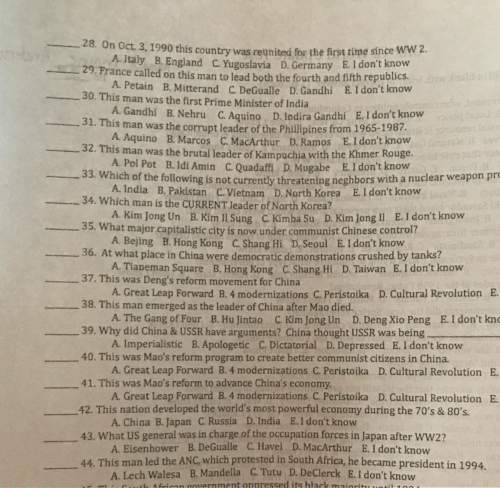
History, 12.08.2020 23:01 AshleyRojas7187
In approaching this problem, we cannot turn the clock back to 1868, when the Amendment was adopted, or even to 1896, when Plessy v. Ferguson was written. We must consider public education in the light of its full development and its present place in American life throughout the Nation. Only in this way can it be determined if segregation in public schools deprives these plaintiffs of the equal protection of the laws. — Brown v. Board of Education, Chief Justice Earl Warren Why did the court choose not to "turn the clock back to 1868" when considering the issue of segregation in public schools? The court disagreed with the Plessy v. Ferguson decision. The court wanted to repeal the Fourteenth Amendment. The court recognized the value of an education to a child's success. The court determined that past plaintiffs had not been deprived of equal protection.

Answers: 1


Other questions on the subject: History

History, 21.06.2019 18:30, Andy10201
Which conditions did austria demand of serbia after the assassination of archduke ferdinand? check all that apply. 1. swearing allegiance to the triple alliance 2. accepting responsibility for the assassination 3. turning over control of its military operations 4. surrendering half of its most fertile lands 5. suppressing anti-austrian groups and publications
Answers: 1


History, 22.06.2019 07:20, evelin2318
Other in the u. s. supreme court, all federal courts were established bya. the constitutionb. congressc. presidential executive orderd. the states
Answers: 1

You know the right answer?
In approaching this problem, we cannot turn the clock back to 1868, when the Amendment was adopted,...
Questions in other subjects:













